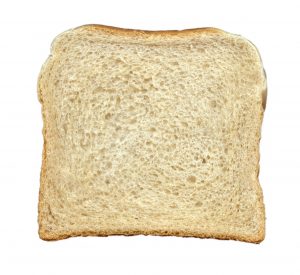
As has come before; many of these posts will be philosophical in nature. Some will be in contradiction to previous postings. These are not intended as truths or assertions, they’re merely thoughts…ideas. Think of this as stream of consciousness over a wide span…Please bare with us as we traverse the abstract canals of audio musings.
Please don’t get me wrong. I appreciate minimalism. Both as a concept, in process and in form. It can lead to beautiful distillations of core themes, messages, or clear direction to the audience as to what is actually important. I especially enjoyed fellow contributor Bradley Meyer’s recent exploration on the topic and thourghly agree with all that he said.
I often wish I were able to better employ a minimalist approach myself, especially when writing on behalf of this fine website as my contributions are often notable for their excessive (and unnecessary) length. I like to say that the true mark of a great communicator is not in their ability to impart a simple idea using complex multisyllabic words in long and convoluted sentences, but instead in their ability to impart complex ideas using the fewest and simplest words possible. The irony (and hypocrisy) is not lost on me, I assure you.
However, at this moment, the end of this month of “Minimalism”, allow me to play the role of devil’s advocate and ask… isn’t “more”… more?
With your latest DesigningSound.org prescribed dosage of “Minimalism”, have you been experiencing side (-chained) fx such as…
…struggling to figure out which layers to mute?
…pulling back Foley, effects, and music (and always in that order… why, why always in that order?) to ensure clarity of dialog in your mix?
…considering removing those redundant patch chords from your modular which only serve the function of making you feel like the evil scientist you truly wish you were?
Well, have you considered… “MAXIMALISM™”? (yes, it is a word)
Maximalism, the countermovement to Minimalism, sprung up in the 60s and 70 and it could be just what you’re looking for!
Sure, it takes careful thought and planning to produce effective minimalistic work. To pare your art or craft down to the fewest essential components, all the while avoiding to dilute the message or impact. But isn’t it even more impressive to just cram it full of content, accounting for every single possible aspect, embedding layer upon layer of excessive detail to the point of nearly overwhelming your audience with an incredibly rich tapestry that despite its density, is also balanced and effective in communicating its message or delivering the intended impact? One that upon repeated consumption reveals more layers and details that enrich the experience?
I mean, would you rather eat this…

Or this…

You see, minimalism is trendy and all, but I believe maximalism has its place. Not only that, but I believe it can actually play alongside (and enhance) a minimalist approach. This is something I’m actually working on at the moment on a short film. It started when I was looking at the opening scene and considering what Foley and effects might need covering. The score however imbued the scene with the sense of it being more a sweet memory than a present moment. So instead of filling in the details with sound, I decided to give it an etherial quality (aka. a bunch of verb), that when combined with the music “just works”, without any need for foley, effects or backgrounds.
Now I know this isn’t a wholly original idea or approach, and I’m not proclaiming to be the first person to apply reverb to suggest a certain scene is a memory or dream (the origin of which might make an interesting article in itself), but I think what really enhances this scene is what follows.
In direct contrast, the rest of the film is very much detail oriented. My director has requested a real sense of the world beyond what we see, so I’ve been crafting these little sound moments of things that feasibly could be going on outside/beyond the frame that while we don’t see, add to the texture of the world giving it a sense of tangibility. This approach gives weight, context, and as a result, significance for a scene within the world which it inhabits. And the contrast between this maximalistic (ok, that might not be a word) approach, and the minimalistic approach that opens the film gives some dynamic contrast, a sense of the respective moments’ unique significance. It seems to subconsciously beg the question, “what does it say about this scene that its style is diametrically opposed (I know, complex and multisyllabic, I can’t help myself) to that of the preceding scene?”.
So next time you find yourself using a minimalist approach, maybe consider whether or not a small dose of MAXIMALISM™ might help make it even more effective.
Disclaimer – May overwhelm and make audience disgruntled/confused.